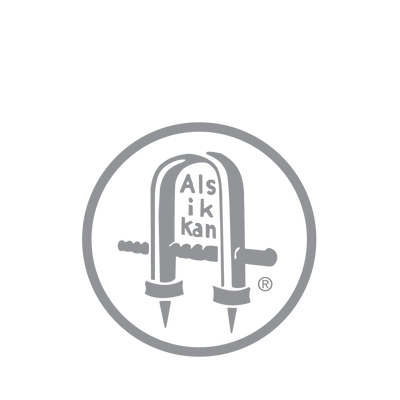
Reading the Signs: Stickley Shop Marks and Notations
Darcy SmithShare
 Print
Print
“From the earliest dawn of history, artists and creative workers have identified the works of their hands and brains by some distinctive symbol or signature. These marks have become a sign of genuine value, a guarantee of authenticity, a certificate of craftsmanship recognized by the collector and neophyte alike.” – Leopold Stickley
Perhaps you’re the owner of a newly purchased piece of Stickley furniture, are lucky enough to have found a Stickley antique, or have inherited a beloved family heirloom. Have you found yourself wondering about the markings you’ve noticed on the back, on the bottom, or inside a drawer? Here’s a sampling of what these markings, labels, and insignia represent, and why they’re an important part of every Stickley piece.
L. & J.G. Stickley paper label, 1935 - 1950
Marks of quality
Gustav and Leopold Stickley employed a wide variety of burned-in brands and paper and metal labels to identify their furniture as original creations—and to attest to each piece’s quality and craftsmanship . A label Gustav used between approximately 1907 and 1912 even served as a form of warranty in case a customer was dissatisfied!
The Stickley companies used dozens of shop marks in the early years of the 20th century. As time passed and the company that is now L. & J.G. Stickley evolved, the marks evolved along with it. Below are just a few examples, but you can see the development of familiar insignia that are still with us today. Look for the eventual co-joining of Leopold’s signature clamp with Gustav’s iconic compass!

- Gustav Stickley / United Crafts, 1901 – 1903
- L. & J.G. Stickley / Onondaga Shops, 1904 – 1906
- Gustav Stickley / Craftsman Workshops, 1905 – 1912
- L. & J.G. Stickley, 1906 – 1912
- L. & J.G. Stickley, 1912 – 1917
- Gustav Stickley / Craftsman Workshops, 1912 – 1916
- Stickley Associated Cabinetmakers, 1916 – 1919
- L. & J.G. Stickley 50th Anniversary medallion, 1950
- L. & J.G. Stickley “piecrust” logo, 1985 – 2009
- L. & J.G. Stickley Mission Reissue metal label, 1989 – present
- L. & J.G. Stickley logo, 2008 – present
“Signed” by the artisan
Certain pieces produced by Stickley bear another marking that is especially meaningful. In keeping with our construction standards, any doors or drawers on a piece of furniture must be hand-fit by one of our cabinetmakers, ensuring that the fit is perfect. When the fitter’s work is done, his or her initials are stamped onto the back of the cabinet, usually near the top left, as a record of their efforts.


In 1988, a local newspaper article about Stickley included the story of Joe Cappotto, a cabinetmaker who also handled customers’ furniture repairs. On occasion, he would find himself working on a cabinet bearing the initials “TC”—for Tom Cappotto, his father, a long-time Stickley cabinetmaker who had retired around 1950. To see his father’s work was a point of pride, but to know just how rarely those pieces needed fixing was even more so.
Key to a perfect fit
We hope you’ll have little need to remove your Stickley drawers completely, but if you do, you may see numbers written on the bottom. Once again, this is a sign of the careful hand-fitting that goes into every Stickley cabinet. Each drawer is individually hand fit to a particular drawer opening, so when there are two or more drawers, they’re numbered to ensure they go back to the proper home after sanding and finishing. A drawer put into the wrong opening could stick or feel loose.
L. & J.G. Stickley brand, 1926 - 1977
Additional sources:
Amanda Clifford, Director, The Stickley Museum
“The Selling of Stickley,” Syracuse Post-Standard, 1988.








